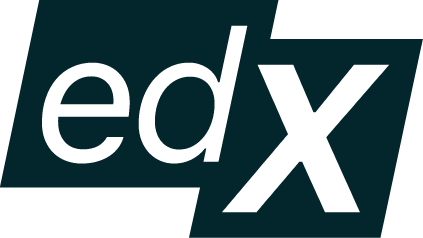Let’s talk about honesty. The foundation of any good job search is built on it, after all.
In an ideal job search, honesty is a two-way street. On one hand, employers are expected to be clear about job descriptions and expectations. On the other hand, candidates are expected to be up-front about their experiences and abilities.
And since truthfulness is at the core of this topic, we’ll start by addressing that we can’t speak for every employer and candidate. With that being said, we hope to add more clarity to your next job search by addressing some of the trends we’ve seen in hiring.
Finding clarity in your job search
As a job seeker, there are two ways to prioritize honesty in your search that reign supreme among other strategies: knowing yourself and knowing the truth.
Career expert, Caroline Yacoe, wants to help job seekers achieve at least one of those goals: knowing the truth.
In a previous career workshop focusing on debunking common job search myths, Caroline outlined some of the common concerns shared by many of our learners. Continue below as we delineate a few of those common job search fallacies and ask industry experts to offer up some truth.

Myth #1: Young talent is always preferable
The fear that ageism affects hiring decisions is common. “It’s very typical to have these thoughts around age,” Caroline says.
Although it is necessary to acknowledge the existence of bias in the job search space, we warn against letting age discrimination dictate your career decisions. Why? Because many companies hire for culture add and goals.
By hiring candidates from different age demographics, companies not only welcome a diversity of skill sets, experiences, and passions but also benefit from candidates’ invaluable wisdom. Entering a new job with robust experience typically means that you have navigated situations and learned lessons unique to you to guide you throughout your career.
It sounds like companies are starting to catch on as things look up for older workers. As published by the Bureau of Labor Statistics in “Older workers: Labor force trends and career options” (2017), one-quarter of our workforce is expected to be 55 and older by 2024.
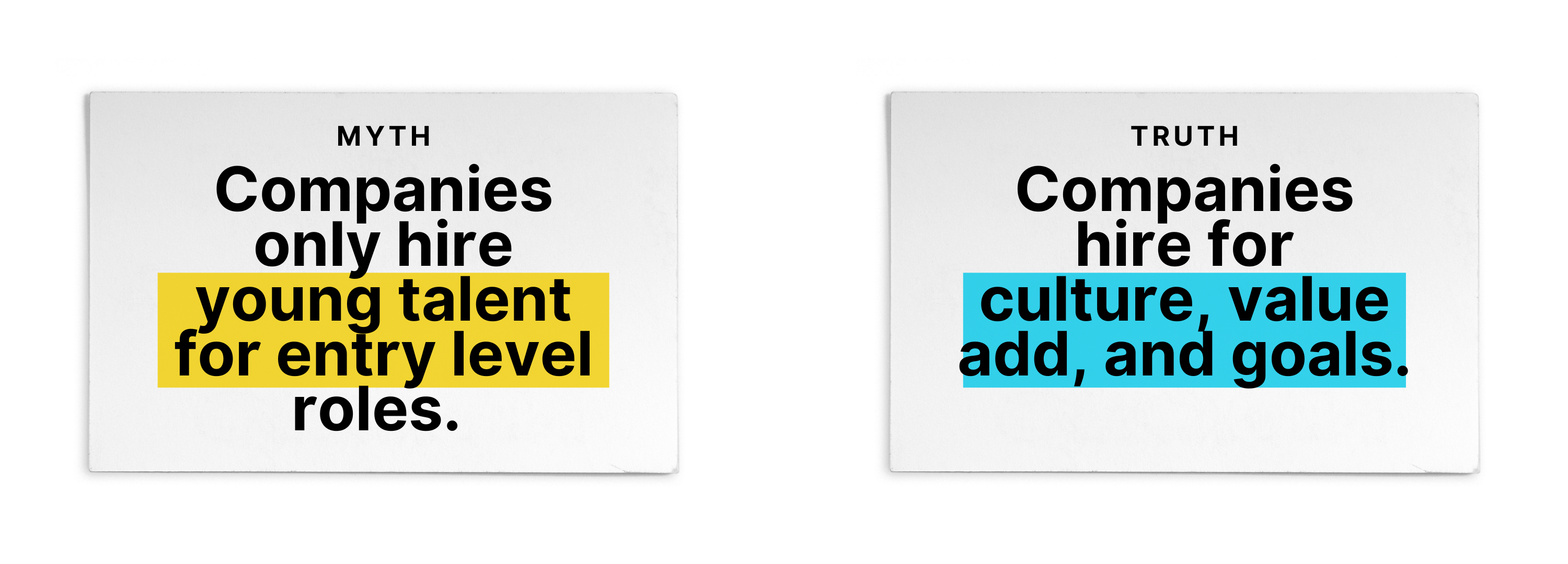
If you are mid-career and looking to make a switch, trust us when we say you are not alone. The reality of the modern workforce is this: having a singular career is falling out of favor and giving way to multiple careers. In fact, a 2019 survey of 662 full-time U.S. workers found that nearly half of them have experienced a big career shift, according to data from Indeed’s Career Change Report. What’s more, that same report confirms that the average age of respondents making a career change is 39 years old.
As the unemployment rate shifts and industries evolve, there is no better time for job seekers of every age to reevaluate their career goals.
While society is moving in a positive direction with the normalization of career pivots, it is important to still be proactive — especially given this harsh reality: According to Indeed’s Career Change Report, the average duration for contemplating such a change is 11 months. “A lot of people are thinking about this for a long time before they actually do make the leap, so it can feel like an extremely long process,” Caroline adds.
As a job seeker, there are many ways you can work to counteract both the lengthy career pivot process and age bias in your search. Caroline recommends a few steps from the proactive job search process: networking, researching, and tailoring application materials.
By making connections at companies you have an interest in, you are pushing back on any blind biases that may exist and simultaneously proving your worth.
Myth #2: Industry experience is always required
“When people talk about having trouble hiring, it’s really based on transferable skills, the soft skills, more so than anything technical,” Caroline says.
Truth be told, employers are often less interested in where you developed interpersonal, technical, or transferable skills and more interested to see that you do, in fact, have them.
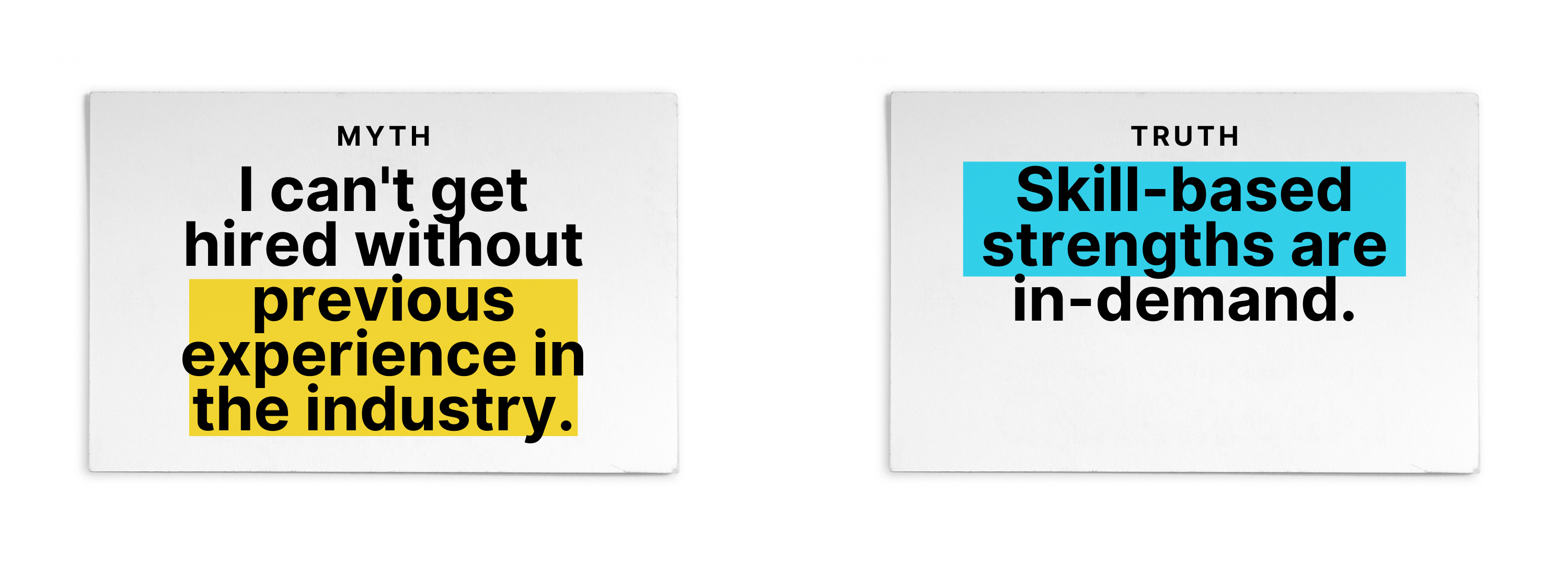
For field-switchers, an important thing to keep in mind is that technical and industry-specific skills can be learned, whereas soft skills are more intuitive.
Often indicative of our abilities to solve problems, work with others, and react to situations, soft skills involve our personality and behavioral traits. The most desired attributes of top employees include effective communication, self-direction, and adaptability, according to data published in Indeed’s “What Are Soft Skills?” article (Updated 2023).
Want to use soft skills to prove that your out-of-field experience is transferable? The way you market yourself as a candidate is extremely important, Caroline says. Be diligent in crafting, understanding, and communicating your career narrative. If possible, work with a career mentor to appropriately highlight non-traditional experiences like freelancing and community service — yes, community service!
Myth #3: Extracurriculars don’t count as experience
One aspect of hiring that is often underestimated is an employer’s desire to hire candidates with emotional intelligence (EQ).
Daniel Goleman, Ph.D., author of the Harvard Business Review article “What Makes a Leader,” agrees. “It’s not that IQ and technical skills are irrelevant. They do matter, but they are the entry-level requirements for executive positions,” he says.
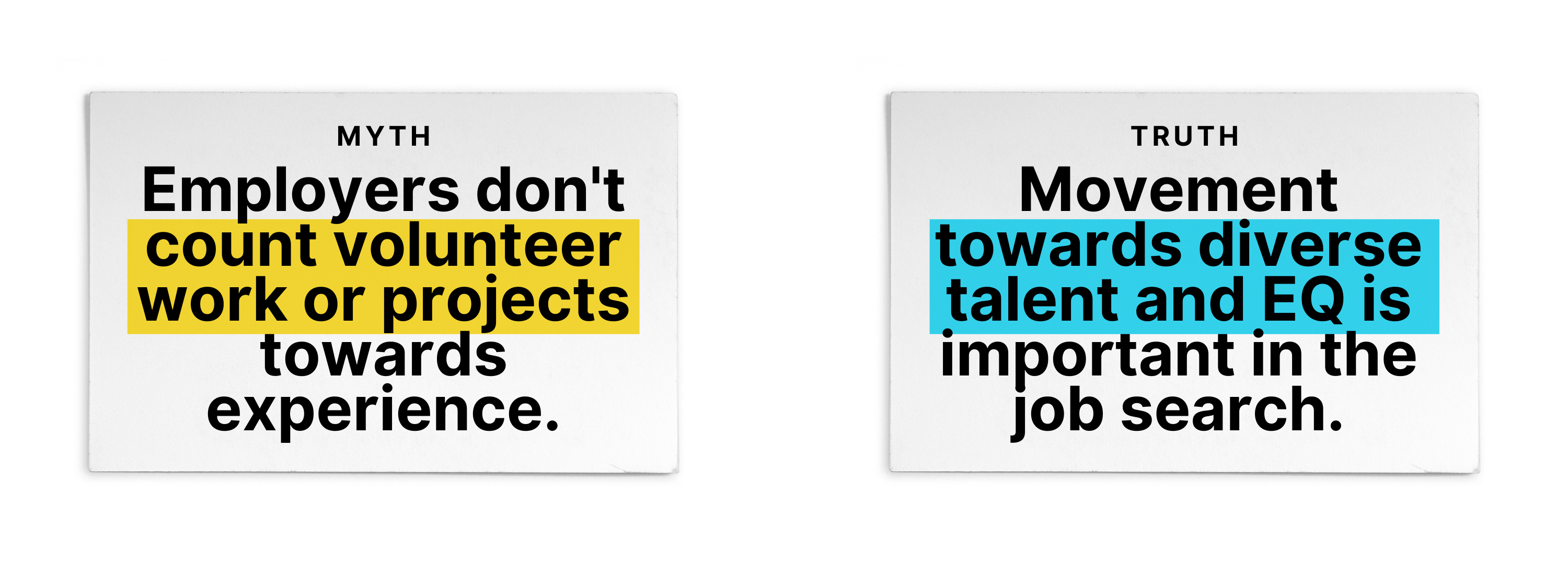
Community service and passion projects help to illustrate your EQ to an employer. Moreover, it demonstrates a willingness to go above and beyond and highlights some of the valuable soft skills that we mentioned earlier. “It really exemplifies, in so many different dimensions, how you are going to be a great employee,” Caroline adds.
Showcasing your extracurriculars (the relevant ones, at least) is a surefire way to set yourself apart from other job seekers. And for the cherry on top: The 2016 Deloitte Impact Survey states that you are 82% more likely to get chosen by hiring managers for that volunteer experience.
Myth #4: You need to meet 100% of the job requirements to get hired
It goes without saying, but we’ll say it anyway, that one of the most intimidating parts of a job search is the job description itself. Caroline refers to it as a wish list of sorts. “The reality of them [the employer] finding someone that has absolutely all of the listed qualifications is really slim,” she adds.
This common tendency to underestimate one’s qualifications and ability to perform a role is often referred to as the “confidence gap.” Hewlett Packard (HP) conducted an internal report delving into this phenomenon, citing data to prove how women are disproportionately affected by it.
HP isn’t the only organization doing research on this topic; a 2019 LinkedIn Gender Insights Report confirmed that women generally apply to 20% fewer jobs than men. Though unfortunate, these findings shed light on the need to bridge the confidence gap and empower individuals, regardless of gender, to recognize their professional worth and apply for opportunities that align with their skills and aspirations.
Gender aside, on average, the magic percentage for meeting a job description is 60%. Meaning if you fulfill three out of five of the requirements, you should apply.
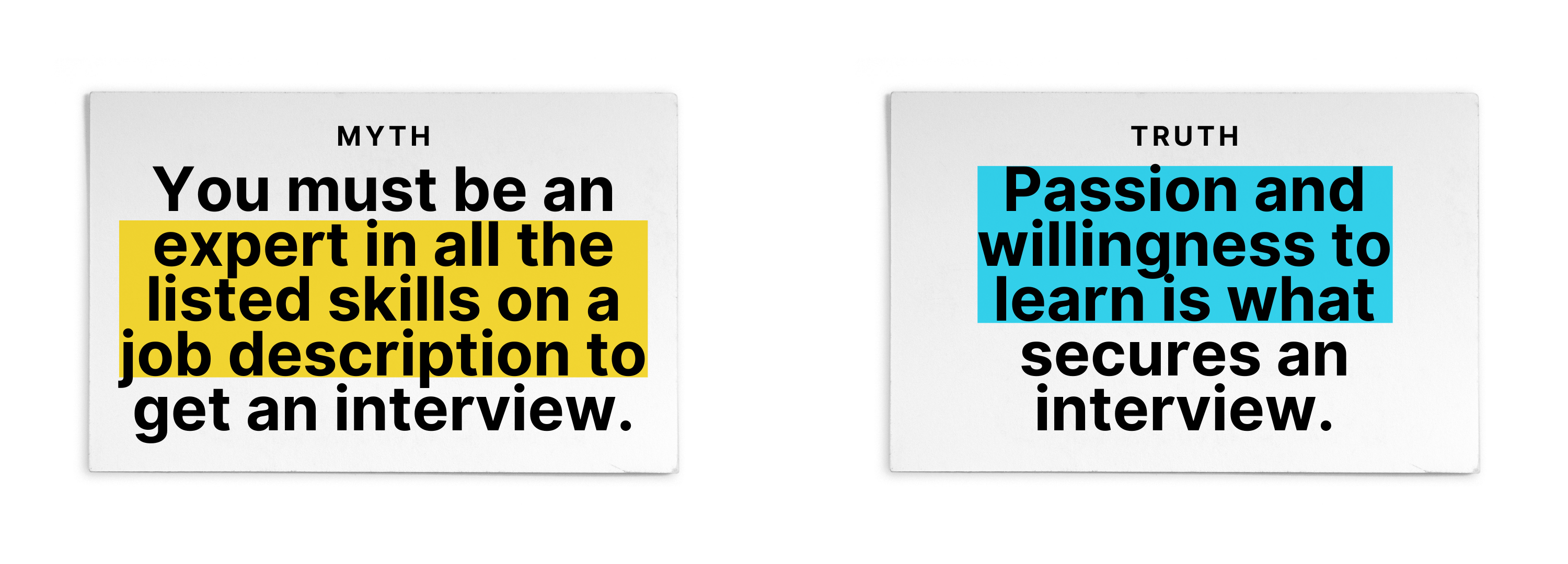
Keep in mind that quality is still better than quantity when it comes to your search. Rather than applying in droves, have more confidence in applying to positions that you are truly interested in but don’t meet all of the qualifications for.
Using 60% as your metric and realism about the listed qualifications as your guide, Caroline encourages job seekers to face job descriptions without fear. “It is all about thinking, maybe I haven’t done this exact thing, but what I have done is similar or, I don’t know about this one area, but I’ve had to teach myself some other really hard and complicated concepts,” she elaborates.
Although intimidating, one positive thing about qualification gaps is that they are actionable. Here are some of our tips to bridge any confidence barriers of your own:
- Remember that it is okay not to match all of the listed requirements.
- Research target companies and their missions. Consider your own unique skill set and goals and how they can further contribute to a company’s purpose.
- Update your career materials as necessary to demonstrate your qualifications.
- Utilize research and free resources like YouTube to brush up on imperative, trending, and relevant topics.
We hope the information we provided gives you the confidence you need to advance in your career. Embrace your age and experience as valuable assets rather than disadvantages by leveraging unique skills, perspectives, and experiences. Let your passions shine through unconventional experiences. And, most importantly, remember that your gender should never keep you from pursuing roles or attaining skills of interest. All in all, there is no harm in applying.
